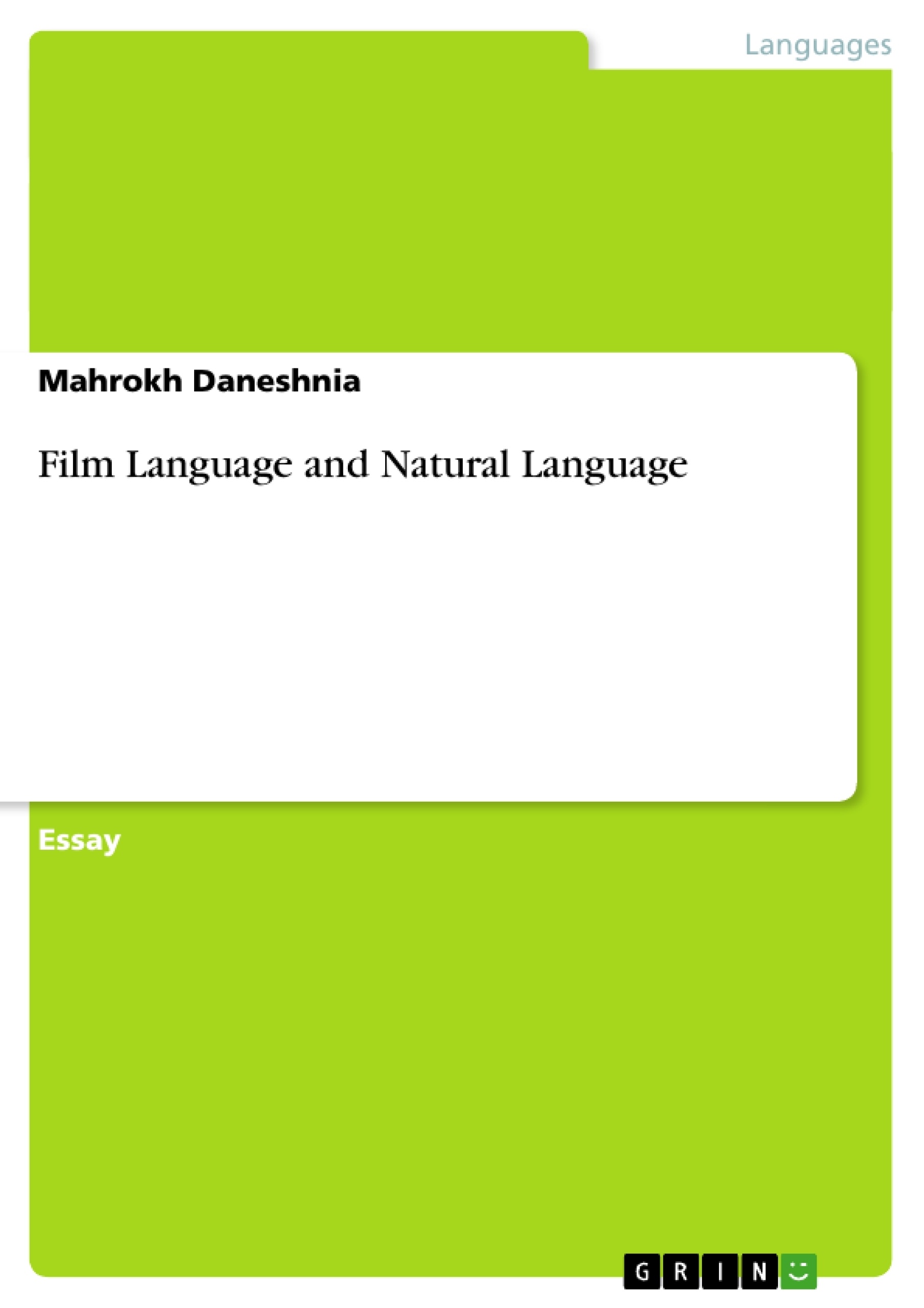The language of film is unlike any existing natural or verbal language as the meaning in natural language comes from a system of conventional signs and symbols, while in film there are no conventional meanings to grasp from cinematic images. This essay analyses some of the main arguments in film language regarding the similarities and differences between film language and verbal language.
Film Language and Natural Language
The language of film is unlike any existing natural or verbal language as the meaning in natural language comes from a system of conventional signs and symbols, while in film there are no conventional meanings to grasp from cinematic images. This essay analyses some of the main arguments in film language regarding the similarities and differences between film language and verbal language.
Semiotics or semiology, in simple words, is the theory of signs. For some theorists film can be studied as a system of signs and that is what they call the language of film. They believe that film is a language and in order to develop this idea, some of them use linguistics and natural language, comparing similarities between the language of film and the verbal language. In early form of this view, shots are compared with words and sentences with sequences. Soviet theorists such as Pudovkin and Eisenstein had strong views about film as a language system. In Pudovkin’s view, visual imagery and literal words work in a similar way. They are both raw material with a variety of meanings on their own, given a specific meaning by the artist only when put in a sentence in the case of literary work and a sequence in the case of film. A film director has access to shots and a poet to words and the combination of these raw materials in an artistic form creates the exact meaning. Pudovkin suggests that filmmaking functions in the same way as the laying of “bricks”.[1] Each shot is like a brick and each brick is related to a word and the connection of the shots or editing is analogous to syntax in literature. The trouble with the bricklaying view and comparing it with natural language the way Pudovkin does, is that in disregarding the bricks order and the way they are put together each brick maintains its wholeness, while the context indicates the integrity of the word and its meaning. Each word in natural language has a specified meaning by convention, therefore for Pudovkin’s model to work, the images need a conventionally set meaning too.[2]
Eisenstein opposes Pudovkin’s bricklaying theory and argues that montage is a collision, it is a conflict and each shot is a “montage cell”. The collision of these cells creates a concept, resulting in the creation of meaning in the spectator’s mind.[3] He believes that the meaning of each shot depends on other shots and the collision of the shots or montage establishes the precise meaning. Eisenstein sees the film as a hieroglyph. Each hieroglyph represents an object in real world and by combining two hieroglyphs a meaning is formed. For example the heart and the knife, two unrelated objects, each represent an object but when combined together they establish the meaning of sorrow. In other words, the composition of two representations forms a concept in the spectator’s mind. Eisenstein suggests that this is very similar to what happens in cinema and montage. The shots are neutral on their own and unable to suggest a meaningful context and juxtaposing them creates a concept.[4] In his view, the cultural relations that the visual images have with spectators is a base for cinematic conventions and that film language relates to a natural pre-existing code which is based on cultural and psychological laws rather than artificial convention.
[...]
[1] (Hudlin), page 48
[2] (Hudlin), page 48
[3] (Braudy and Cohen), page 19
[4] (Braudy and Cohen), page 15
- Arbeit zitieren
- Mahrokh Daneshnia (Autor:in), 2013, Film Language and Natural Language, München, GRIN Verlag, https://www.grin.com/document/271494
-

-

-

-
Laden Sie Ihre eigenen Arbeiten hoch! Geld verdienen und iPhone X gewinnen. -

-
Laden Sie Ihre eigenen Arbeiten hoch! Geld verdienen und iPhone X gewinnen. -

-
Laden Sie Ihre eigenen Arbeiten hoch! Geld verdienen und iPhone X gewinnen. -

-
Laden Sie Ihre eigenen Arbeiten hoch! Geld verdienen und iPhone X gewinnen.

